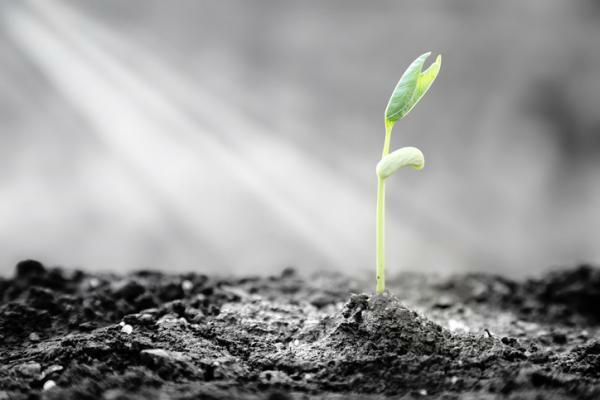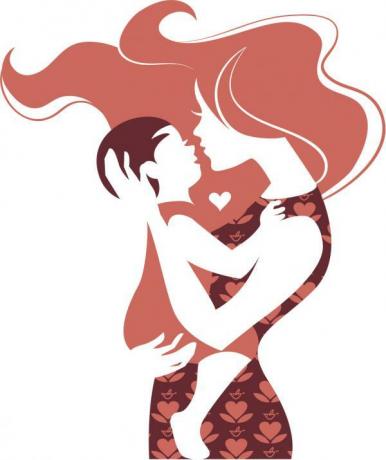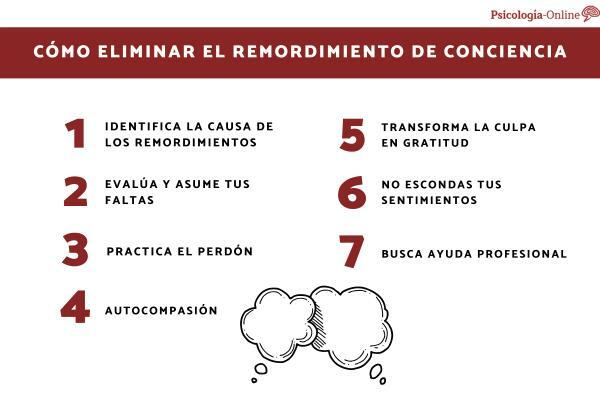
“Children are inherently vulnerable, yet they are also strong in their determination to survive and grow.”.
Radke-Yarrow and Sherman (1990)
History is a first-rate witness of the unimaginable capacity that human beings can manifest to overcome tragedies, catastrophes, extreme experiences, etc. The human being can show a very high capacity to overcome devastations, deprivations, losses and stressful and painful experiences, and move on without losing the life's sense. In this PsychologyOnline article, we will talk about the Resilience: learning to overcome tragedy and personal catastrophe.
Index
- What is resilience?
- How do you develop resilience?
- Attachment: platform for the development of resilience or basis for the development of vulnerability.
- Types of attachment
- Developing resilience
- Conclusions
What is resilience?
The history of man has shown that, as Boris Cyrulnik says, “no wound is a destiny”. Examples such as Job, Anne Frank, Victor Frankl, and others less known, but no less relevant, such as some of the survivors of the Jewish Holocaust at the hands of the Nazis, or many of the surviving orphaned children of the London bombing during WWII, who somehow managed to reorganize their lives and overcome the horror of war and devastation, show the great capacity of the human being to resist their experiences traumatic.
The term resilience has its origins in the world of physics. It is used to express the capacity of some materials of return to its natural state or form after undergoing high deforming pressures.
Resilience comes from the Latin highlight (re jump). It connotes the idea of bouncing or being repelled. The prefix re refers to the idea of repeat, revive, resume. Resiliar is, then, from the psychological point of view, to rebound, to revive, moving forward after having a traumatic experience.
According to María Eugenia Moneta, the notion of resilience refers to the “process of having a good tolerance to high-risk situations, demonstrating a positive adjustment in the face of adversity or trauma, and managing the variables associated with risk in situations difficult ”.
Resilience is thus the ability of the human being to face and overcome adverse situations - high-risk situations (losses, damage received, extreme poverty, mistreatment, circumstances stressful, etc.) and generate in the process a learning process, and even a transformation. It assumes a high capacity to adapt to the stressful demands of the environment. Resilience generates the flexibility to change and reorganize life, after having received high negative impacts.
Now, resilience is not about the ability to suffer and endure like a stoic. More than the ability to face and resist abuse, injuries, etc., resilience is the ability to recover the development that was had before the coup. The resilience of the person allows to overcome the trauma and rebuild his life. Boris Cyrulnik goes even further and speaks of "the capacity of the human being to recover from a trauma and, without being marked for life, be happy".
So resilience does not mean invulnerability, nor impermeability to stress or pain, it is more about the power to bouncing back and recover after experiencing harsh adversity and stressful / traumatic experiences.
How do you develop resilience?
Is resilience influenced by congenital factors (constitutional aspects, personal attributes)? Can you cultivate resilience? What determines that some people manage to resist their traumatic experiences, while others succumb, given their vulnerability, to them? What makes it so that people who were born and raised in high-risk situations have developed psychologically healthy and successful? Are there social (family, social and cultural environment) or intrapsychic factors that tend to create resilience in some people? Is resilience development restricted to specific life stages? These concerns arise when discussing this topic.
First of all we will say that you are not born resilient. Resilience is not a kind of innate biological strength, nor is it acquired as part of people's natural development. Resilience is not a competition that takes place out of context, by the will of the person. It is not built by the person alone but is given in relation to a specific environment that surrounds the individual.
On the other hand, there is no fixed pattern or formula to build it, rather, each person develops it according to their needs, and attending to their cultural differences, depending on the context where they live. In this sense, the cultural context plays a fundamental role in how each person perceives and deals with adversity and stressful experiences that life confronts them with. So each person develops their own strategies to cope with traumatic experiences. Either way it depends on how the interaction between the person and her environment is known. In this regard, Boris Cyrulnik comments: “Resilience is woven: it is not necessary to look for it only in the interiority of the person or in her environment, but between the two, because she constantly knots an intimate process with the environment Social". In the words of the biologist Maturana, it is a “dance between the two”.
According to the neuropsychiatrist Boris Cyrulnik, there are two factors that promote resilience in people:
- If the person in his early childhood could hatch a personality principle, through a attachment insurance, which is forged in the relationship with the other (caregiver), through an interaction and exchange that weaves resilience from intrauterine communication, through the connection with the caregiver, especially the mother, which provides emotional security in the early years of life. This type of interaction becomes a protection mechanism.
- Yes after the "mess" (traumatic experience), a network of "development tutors" is organized around the person, that is, the possibility of grabbing or holding onto someone or something. This something or someone to hold on to becomes a guardian of resilience, which promotes or provokes healthy and functional psychological development after trauma. This caregiver acts as the means for the child to develop a sense of life and identity.
Attachment: platform for the development of resilience or basis for the development of vulnerability.
Attachment - the way in which caregiver and child bond at an early age - is a factor decisive in the construction of the personality, and in how the individual learns to regulate his own emotions. Attachment gives rise to the first positive (affection, security, trust) or negative (insecurity, fear, abandonment) feelings and sensations.
Attachment can be defined as the bond that a person establishes to form a intense emotional bond with other. This tendency of the human being, especially in his early age, to bond emotionally with the person who perceives as his caretaker, it is a primary (unlearned) biological need, as essential as the need for hunger or thirst.
The child's willingness or need to establish stable links with their parents or their substitutes is so strong that even in the presence of a “negative” figure, it establishes itself. In this case we speak of elusive attachment, or ambivalent attachment, or disorganized attachment, which we will refer to later.
The truth is that attachment formation it exerts a fundamental influence on the mental health and emotional development of the child, and has a high impact on the organization and regulation of the brain. It will also have a determining impact on the way that person in adulthood will relate and behave with other people. How the child is linked to her caregivers will depend on the state of security or insecurity, anxiety / fear or emotional stability that he will develop as an adult. Attachment or affective bonding can be a predictor of how the individual will behave as an adult when interacting with his peers, partners and children.
The attachment style, then, involves a psychological resilience factor or a risk factor, in terms of its potential to promote health and emotional well-being, and adequate cognitive functioning; or on the contrary, because it is the source of psychological problems.

Types of attachment.
Depending on the response of the caregiver, the child can develop several types of attachment:
Secure attachment
It occurs when the child develops the confidence that her caregiver (s) will be sensitive (s) and collaborative (s) to her basic needs or to a threatening and frightening situation. In building this type of attachment, the mother plays a fundamental role. The mother figure is the basis for building resilience. The newborn is all need, and is totally dependent on the mother for the satisfaction of her needs. At this stage the child becomes completely confluent with her mother. The mother is the only reference of protection and love for the child. When the mother fulfills the role of provider of the child's needs, and she contributes to creating a safe environment around He fosters the emergence of a secure attachment relationship, which constitutes the platform for the development of resilience in the boy. As Margarita G. Mascovich quoting Fonagy, "Secure attachment is the secure conducive to resilience."
For the child to develop a secure attachment depends on how the adult caregiver (mother, father, other) be linked to it. If the caregiver's account with the child is set with sensitivity to the child's needs (she knows she likes the child child), if the caregiver expresses his emotions positively in a congruent way, if he enjoys physical contact with the boy; then, the child will have a better chance of developing confidence and security, as well as greater emotional self-regulation and greater consistency in her emotional manifestations.
The safe hit represents the affective ties that act as mechanisms or systems of self-protection before adversities and hostile and stressful attacks in the environment.
Ambivalent attachment
In this case the child feels insecure of her caregiver, since it is not congruent or consistent in the response to the child. In this context, a relationship between the caregiver and the child is established characterized by low verbal communication, low physical contact, as well as a low level of response to crying and child's vocalizations. As a consequence, the child develops an angry and ambivalent behavior, showing passive, dependent and little available access to rules and limits. This behavior is the response to caregivers who only responded to their emotional expression of intermittently and ambivalently, reacting more to negative rather than positive feelings of the boy.
Then in their performance as an adult, people who develop an ambivalent attachment show themselves to be dramatic and overly emotional, as a consequence of the fact that the base of their security malfunctioned, maintaining a behavior that was both "excessively attached" and angry, with low emotional regulation.
Insecure (avoidant) attachment
It happens when the adult does not respond to the child's demands for protection, or does it inconsistently, causing insecurity in it. This type of bond prevents the child from satisfying her need for security, leading to the child's isolation (avoidance of contact) or the development of an anxious attitude when perceiving lack of availability of his carer.
In this context, the caregiver avoids physical contact with the child. On the other hand, their behaviors are of rejection of the child and of opposition to the wishes of the child. This style of the caregiver of relating to the child generates in him a distancing towards the caregiver from him, avoiding physical and emotional contact with the latter.
Disorganized attachment
This attachment occurs when the caregiver (s) is ambivalent in their treatment and way of bonding with the child, to which he sometimes accepts and responds favorably and other times he rejects him, generating fear and confusion in the child before the caregiver. Under this form of affective bonding, the caregiver does not offer the distressed child responses that tend to his well-being.
This particular attachment style is directly linked to the child abuse. Most likely due to the experience of mistreatment and abuse suffered by the caregiver.
This type of attachment is the highest risk, given the hostility shown by the caregiver, which translates into rejection, abuse and mistreatment of the child.
Developing resilience.
How to promote development and early building of pillars of resilience? Or how does a person, family, institution or nation manage to articulate and provide around the person who received the trauma, the external resources that allow him to resume a healthier type of development and functional? What strategies can be used to promote resilience? Let's look at some key elements in the process.
Family context
In the first place we will say how S. Sánchez: "Resilience is a characteristic that can be learned as a product of a positive interaction between the personal and environmental component of an individual." This environmental component mentioned by Sánchez, is constituted, in the first instance, by the family.
There is no doubt that the greatest responsibility for the promotion of resilience falls on the family, it is what goes hand in hand with the laws of development and the ecology of the human being. And within the family, the main role promoting resilience is the mother, as the main caregiver. That is how the functional or dysfunctional interaction of the mother with the child, generates in the latter the learning that will shape the form of affective bonding and the relational style of strength or weakness, which will be the basis for the action and responses of the individual to the challenges and demands of the environment. In line with this line of thought, the empirical results confirm that the type of affective bond built in the first years of life creates the bases for the development of a capable and confident person, with the necessary strengths to face and overcome strong adversities and experiences traumatic.
Resilience Tutors
Another indispensable element in the process of developing resilience, is glimpsed in the enlightening answer provided by Boris Cyrulnik, in an interview that appeared published in Le Figaro Magazine: "Everyone can become resilient, because it is about rejoining, as far as possible, the parts of the personality that were destroyed by the trauma. But the suture is never perfect and the damage leaves traces. To become resilient, it is necessary to find how internal resources were permeated into memory, what is the meaning of trauma to one, and how our family, our friends, and our culture place around the injured external resources that will allow him to resume a type of development ".
These external resources mentioned by Cyrulnik, can only be provided by the resilience tutors (family, friend, culture). Adds Cyrulnik: “If the wound is too big, if nobody blows on the embers of resilience that still remain inside, it will be a psychic agony and a wound impossible to heal ”(Cyrulnik, 2001). In this regard, Ma. Elena Fuente Martínez also comments: “In this process of re-construction the presence of others is significant, because in solitude it is not possible find the resources to heal the pain, we need another to express, speak, share, signify and build actions that allow us to elaborate experiences painful ”.
Sense of life
Finally, giving meaning to life is an essential element that allows the person who has suffered a trauma to overcome. In this regard, Anna Forés says: “When the search for meaning has a favorable outcome, then the injured person can advance in their transformation process. On the contrary, if this search continues indefinitely without an answer, we will only find a wound that will never heal: the feeling of restlessness and pain will persist for a long time ”. Nietzsche said it well: "Who has a reason to live, he will find a how." Or said in the words of Dr. Stephen Covey: "Wretched is he who did not see any sense in his life, no goal, no intentionality and, therefore, no purpose in living it, that would be lost. The man who becomes aware of his responsibility to the human being who awaits him with all his affection or to an unfinished work, will never be able to throw his life overboard. It knows the 'why' of its existence and it can bear almost any 'how' ”.
The human being lives permanently in search of a meaning that gives meaning to his life and when he does not find it, he succumbs to the demands of the environment. As R. May: “The human being cannot live a condition of emptiness for long: if he is not growing towards something, he not only stagnates; the repressed potentialities turn into morbidity and despair and eventually destructive activities ”. This reality becomes even more manifest, in situations of great difficulty and deprivation (death, extreme poverty, significant losses, illnesses, mistreatment, deprivation, abuse, etc.).
A survivor of the Nazi concentration camps, and undoubtedly a resilient, Dr. Victor Frankl says in this regard: “A person who is projected towards a sense, who has made a commitment for him, who perceives it from a position of responsibility, will have a incomparably greater chance of survival in extreme situations than that of other people normal".
Meaning, therefore, returns the person immersed in devastating and tragic situations to open up to the positive and hopeful aspects of existence.

Conclusions.
- Studies show that when children are able to establish in their earliest months and years, a secure bond as attachment (security, trust in the caregiver, etc.), this condition acts as a predictor of your resilience capacity. In this process the mother plays a fundamental role, although the child is not only a "passive recipient" in the process, but acts as a “co-author” together with the mother and father, without ignoring the weight of the context cultural. On the contrary, insecure attachment styles hinder the emergence of resilience, although this attachment style should not be seen, in deterministic terms, as a fatality, but as a trend that can be reversed, if addressed adequately.
- At the time of trauma, the existence of resilience tutors, serve as fundamental support to help the individual to recover the meaning of life. In the words of Boris Cyrulnik, it requires "someone who marks their lives in a positive way, on the plane of affection."
- Empirical evidence shows that resilient children, those who managed to establish a secure attachment, report having skills for personal interaction, socialization, the strength to overcome adversity, affective self-regulation, orientation towards social resources, healthy self-esteem, creativity and resourcefulness to overcome obstacles, among other.
- "Resilience is a dynamic process, which takes place over time, and it is based on the existing interaction between the person and the environment, between the family and the social environment. It is the result of a balance between risk factors, protective factors and the personality of each individual, functionality and family structure ”. (Alicia Engler)
This article is merely informative, in Psychology-Online we do not have the power to make a diagnosis or recommend a treatment. We invite you to go to a psychologist to treat your particular case.
If you want to read more articles similar to Resilience: learning to overcome tragedy and personal catastrophe., we recommend that you enter our category of Emotions.
Bibliography
- Moneta María Eugenia, Attachment, Resilience and Vulnerability to Illness: Genotype-Environment Interactions. Gaceta de Psiquiatría Universitaria, Universidad de Chile, year 3, volume 3, No. 3 September 2007.
- Cyrulnik Boris, Of Body and Soul, Gedisa, 2007
- Interview with Boris Cyrulnik by Catherine Nay and Patrice De Meritens, Le Figaro Magazine, Saturday July 24, 1999. International Edition.
- Fuentes Ma. Elena, Is happiness possible? Bond and attachment,
- Domínguez J., Resilience After Hurricane Katrina and Rita.
- Sánchez S. (2003). Resilience How to generate a shield against adversity. El Mercurio newspaper. Retrieved October 12, 2005.
- Forés Anna, Pedagogy of Resilience, Young Mission Magazine. No. 377 - 2008
- Covey Stephen, The 8th. Habit, 2005
- Frankl Victor, In the Beginning Was Meaning, 2000


